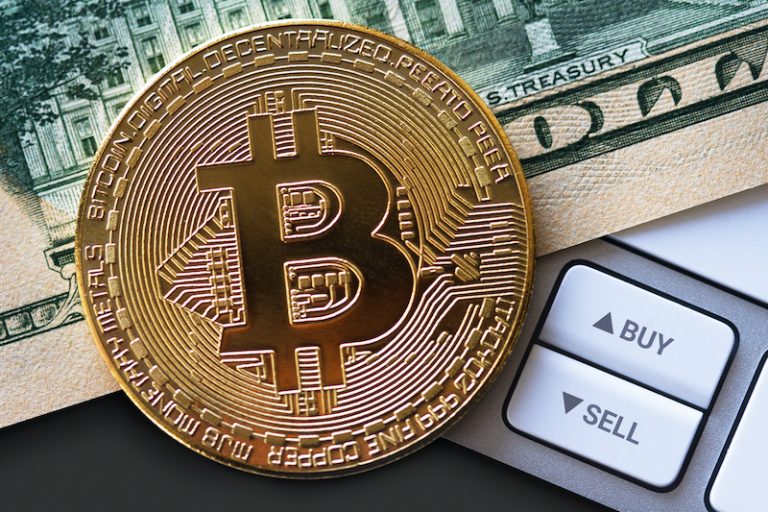
Bitcoin vs companies market cap is a fascinating topic that highlights the contrasting worlds of cryptocurrency and traditional finance. As Bitcoin continues to assert its place in the global financial landscape, understanding how its market capitalization stacks up against established corporations provides valuable insights for investors and enthusiasts alike.
This discussion explores Bitcoin’s journey, its current standing among global assets, and compares its market cap to that of major companies like Apple and Amazon. By diving into historical data, current trends, and future projections, we can better comprehend the implications of these dynamics in today’s economy.
Introduction to Bitcoin and Market Capitalization
Bitcoin has emerged as a revolutionary digital currency since its inception in 2009. To understand its significance, we first need to grasp the concept of market capitalization. Market capitalization, commonly referred to as market cap, is the total market value of a company’s outstanding shares of stock. It serves as a crucial metric in financial markets, helping investors gauge the size and value of a company relative to others.
In the context of cryptocurrencies, Bitcoin plays a pivotal role, often being referred to as the gold standard of digital currencies. Historically, Bitcoin’s market cap has fluctuated significantly, sometimes rivaling the market caps of established multinational corporations.
Current Status of Bitcoin Market Cap

As of now, Bitcoin’s market cap stands at approximately $800 billion, making it one of the largest assets globally. This positions Bitcoin as a leading player in the financial landscape, often ranked within the top ten assets alongside major companies. For a comparative perspective, let’s look at some of the giants by market cap:
- Apple: Approximately $2.5 trillion
- Microsoft: Approximately $2.3 trillion
- Amazon: Approximately $1.5 trillion
When we compare these figures, it’s evident that while Bitcoin has a substantial market cap, it still trails behind the top tech companies. Over the past year, Bitcoin’s market cap has experienced notable volatility, reflecting both the excitement and uncertainty within the cryptocurrency market.
Comparison of Bitcoin and Major Companies

To better illustrate the comparison between Bitcoin and major corporations, consider the following table outlining their market caps:
| Asset | Market Cap (in trillion USD) |
|---|---|
| Bitcoin | 0.8 |
| Apple | 2.5 |
| Microsoft | 2.3 |
| Amazon | 1.5 |
The factors affecting the market cap of Bitcoin differ from those of established companies. Bitcoin’s value is heavily influenced by market sentiment, technological developments, and regulatory news, while major corporations typically rely on revenue growth, earnings reports, and market competition. Furthermore, Bitcoin’s price fluctuations often show a correlation with the stock prices of major companies, indicating a complex relationship between traditional equities and the cryptocurrency market.
Influences on Market Cap Fluctuations
Regulatory news plays a significant role in impacting Bitcoin’s market cap, often causing immediate reactions in the market. For instance, favorable regulatory announcements can lead to price surges, while negative news can trigger sharp declines. Conversely, corporate news related to established companies tends to impact their stock prices more gradually, reflecting the overall stability of traditional markets.Investor sentiment is another crucial factor in the valuation of Bitcoin.
Unlike stocks, which are typically influenced by fundamentals and financial performance, Bitcoin’s value is often swayed by market psychology, leading to dramatic price swings. For example, during periods of market enthusiasm, Bitcoin has witnessed explosive growth, while bearish sentiment has resulted in steep declines.Several market events have caused significant changes in both Bitcoin and company market caps. A notable example includes the 2021 bull run, where Bitcoin’s market cap reached an all-time high, surpassing that of many established companies.
Such events underline the volatility inherent in cryptocurrency markets.
Future Projections for Bitcoin and Company Market Caps
Looking ahead, Bitcoin’s market cap could experience various scenarios over the next five years. Factors such as increasing institutional adoption, regulatory developments, and technological advancements will play a pivotal role in shaping its trajectory. Emerging companies in the tech space, such as decentralized finance (DeFi) platforms, could rival Bitcoin’s market cap, especially if they gain widespread acceptance.The following factors could influence Bitcoin’s market cap moving forward:
- Regulatory changes and government policies
- Technological innovations and upgrades in the Bitcoin network
- Market adoption by institutions and retail investors
- Competition from other cryptocurrencies
- Global economic stability and inflation rates
Economic Implications of Bitcoin vs Companies
Bitcoin’s market cap has significant implications for the global economy. As Bitcoin continues to grow, it challenges traditional financial systems and may influence the market strategies of established companies. Businesses that have adopted Bitcoin as a payment method, such as Tesla and Square, have experienced changes in their market cap, often seeing an increase in investor interest and support.By integrating Bitcoin into their operations, these companies can attract a new clientele interested in cryptocurrency, thus expanding their market presence.
However, this also introduces volatility and risks associated with cryptocurrency markets, requiring businesses to develop robust strategies to navigate the duality of traditional and digital currencies.
Investor Perspective on Bitcoin and Companies
Investors looking to diversify their portfolios face distinct strategies when considering Bitcoin compared to traditional companies. Investing in Bitcoin presents a higher risk-reward profile due to its notorious price volatility and speculative nature. In contrast, established firms generally offer more stability and predictable returns, albeit at potentially lower growth rates.Testimonials from investors who have diversified into Bitcoin alongside traditional stocks reveal a mix of experiences.
Some have found success in their investments and appreciate the potential for high returns, while others emphasize the importance of exercising caution and understanding the underlying risks associated with cryptocurrency investments.Ultimately, investors must weigh their risk tolerance and investment goals when deciding to include Bitcoin in their portfolios, as the dynamics between Bitcoin and traditional company stocks continue to evolve.
Final Wrap-Up
In conclusion, the comparison of Bitcoin’s market cap with that of major companies unveils a complex interplay of factors that influence valuation in both realms. As the cryptocurrency landscape evolves, staying informed about these trends not only aids investors in making strategic decisions but also deepens our understanding of how digital assets are reshaping the financial world.
Question & Answer Hub
What is market capitalization?
Market capitalization is the total market value of a company’s outstanding shares, calculated by multiplying the stock price by the total number of shares.
How is Bitcoin’s market cap calculated?
Bitcoin’s market cap is calculated by multiplying the current price of Bitcoin by the total number of Bitcoins in circulation.
Why does Bitcoin’s market cap fluctuate?
Bitcoin’s market cap fluctuates due to changes in market demand, investor sentiment, regulatory news, and macroeconomic factors.
Can Bitcoin’s market cap surpass that of major companies?
While it’s possible for Bitcoin’s market cap to surpass that of major companies, it depends on various factors like adoption rates, market trends, and overall economic conditions.
How does investor sentiment affect Bitcoin compared to companies?
Investor sentiment impacts Bitcoin more significantly due to its volatility and speculative nature, whereas traditional companies are influenced by earnings reports and economic indicators.
